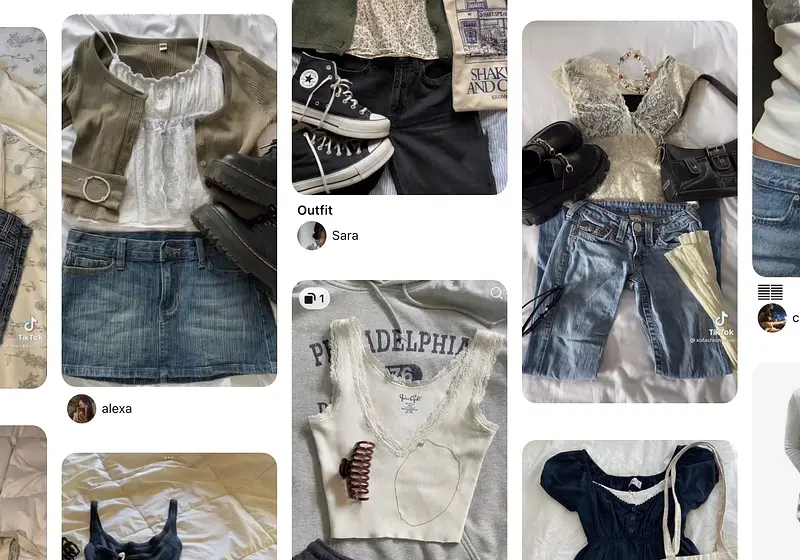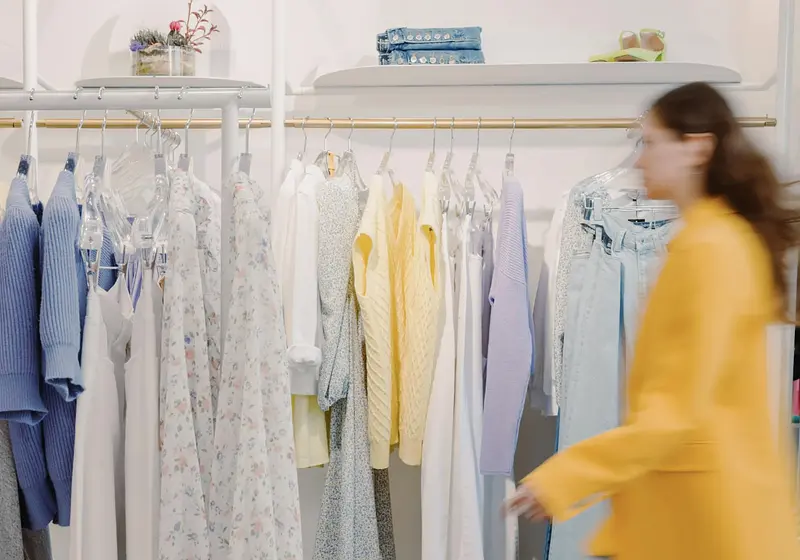Google defines the term ‘Coquette’, as “a flirtatious woman” and when applied to the fashion realm, it encompasses the trend that embodies the archetypal feminine style. ‘Coquette’ fashion is characterised by lace, ribbons, and dainty pieces - think ballet flats, pigtails, Lana Del Rey, and Vladimir Nabokov's ‘Lolita’ (no fear, I will get into the problematic nature of the infantilised aspect of the style later). But how has the trend become so popular? And why exactly is this important enough to warrant this article’s exploration?

Image Credit: Sandy Millar on Unsplash
So how did the trend gain popularity? I am going to take you back to COVID-19 (no groaning at the back). With the world locked up inside, many of us found solace in the comforting cradle of our screens and the online world. Platforms such as TikTok skyrocketed as we struggled to find the physical sense of community we lacked online, influencers offering to pacify our cravings.
With so much free time thrust upon us, many resorted to a dangerous loop of scrolling and thinking a lot about themselves and scrolling and thinking about what other people might think about them. Rinse and repeat. In the words of Jemima Kirke, “I think you guys might be thinking about yourselves too much”.
Essentially, it seemed that there was some sort of collective identity crisis occurring in the cyberspace airwaves. The feelings of isolation and self doubt were then satiated by endless ‘core’ trends. Are you cottagecore?
Are you dark academiacore? Are you fairycore? These micro, super-specific pigeon-hole labels allowed people to feel a part of something larger - the community we were all seeking during such unprecedented times - but they also allowed people to feel as though they were learning something about themselves. A label offers an answer; a source of understanding and comfort. This explains the traction that trends like this were able to gain so rapidly, but what sets the ‘coquette’ aesthetic apart from its sister trends?
Living now in a post-COVID world, the factory line production of micro trends and ‘cores’ has seemed to slow down slightly. Perhaps, because people have been able to get back out into the world. However, platforms like Tiktok continue to thrive. Online, there appears to be more of a conscious effort to consume sustainably and consciously, with trend forecasters predicting a move to classic, plainer pieces - think 90s Rachel Green and Kate Moss - rather than the garish cowprints and e-girl bleached money pieces of 2020.
However, whilst the ‘cores’ have dissipated, I argue that ‘coquette’ remains. It has matured with its audience, with the rise in popularity of Masion Margiela Tabis, drop waist skirts and capris. 'Trendy' pieces largely remain to be traditionally feminine silhouettes and shapes. I attribute the reinforcement of archetypal femininity to attempts to combat present-day technological advancements.
With the development of AI, fearmongers - largely online - push that we are on the precipice of some sort of cyber-revolution, or war, or something huge and incomprehensible, conjuring images of some sort of Doctor-Who-Cybermen-style attack. Platforms like ChatGPT are now interwoven into daily life, and the future seems to be something akin to a Sci-Fi film.
Whether or not the fear-mongering has any merit, many are attempting to reject technology and decentre it from their lives as a result. I argue that this can manifest in the scramble to reconnect with the very bones of what it means to be human, or dare I say, ‘tradition’.
Five minutes on Instagram reels and you’ll spot some form of ‘trad-wife’ content. It spans from advice on dressing modestly to baking videos. Bonus points if you can find somebody who milks their very own cows to prepare breakfast for their husband. Many of us have engaged with the Nara Smith discourse.
Essentially, it seems that culturally we are moving towards (or back to) the feminine and masculine binaries that many have desperately fought against. For this reason, the coquette aesthetic has come under fire, with critics claiming that it reproduces harmful gender norms. Its links with media such as ‘Lolita’ have also sparked debate regarding the sexualisation of young girls and the harmful impacts.
Is this trend about allowing women to embrace their femininity or does it just reproduce dangerous gender norms? It seems to be a slippery slope, and is most likely specific to each individual that partakes.

Image Credit: Alyson McPhee on Unsplash
Evidently, the trend is a divisive one. Perhaps this is why it seems to remain at the forefront of fashion discussions online. Ultimately, regardless of debate, the 'coquette' aesthetic serves as a model of how fashion and trends are inextricably linked to their political, social, and cultural contexts.
The prevalence of 'coquette' and feminine fashion serves as a representation for a wider desire to reclaim the aspects of tradition or 'a simple life' that many feel has been stripped away as a result of developing technologies. Through its examination, details of human behavior are revealed. Ultimately, trends and fashion can serve as a model through which to understand the world around us.








